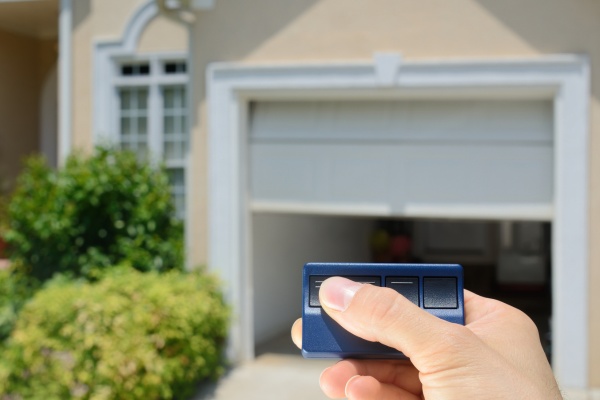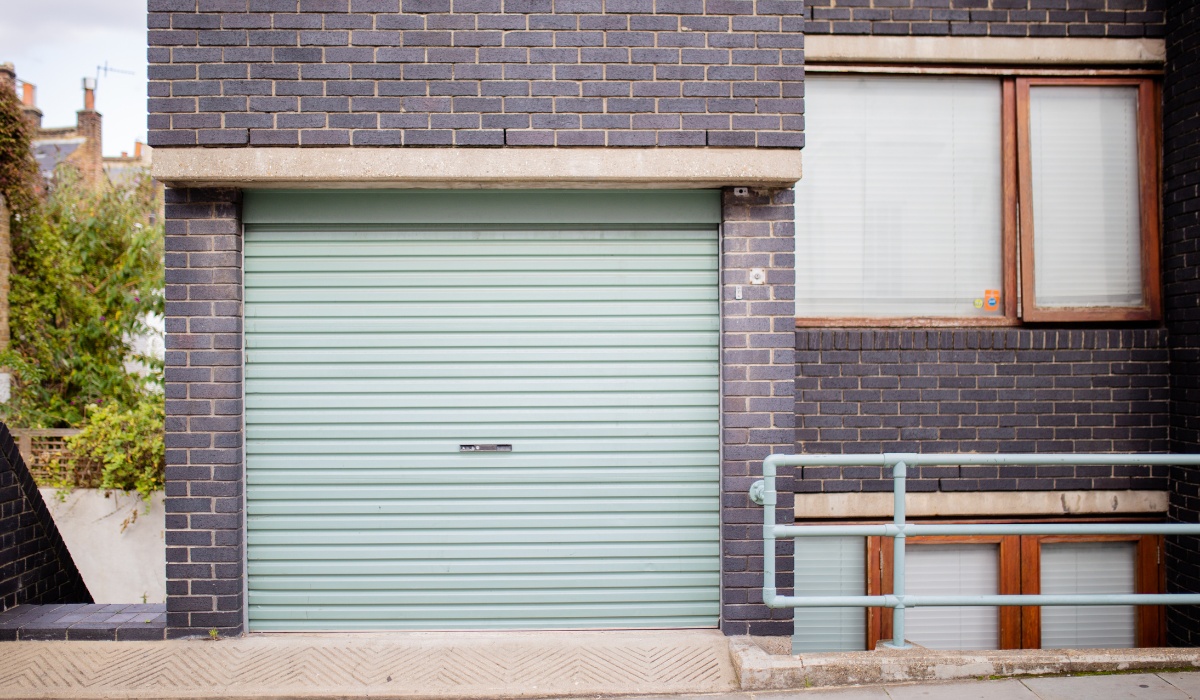If your garage door seal is cracked, worn, or letting in drafts, repairing or replacing the weather stripping can restore your garage's comfort and save energy. This comprehensive guide walks you through identifying seal problems, choosing the right weather stripping, preparing for repair, executing a DIY fix, and maintaining the seal to ensure your garage stays insulated and protected year-round.
What Are the Signs That My Garage Door Weather Stripping Needs Repair?
Recognizing when your garage door weather stripping needs repair is the first step to effective garage door maintenance. Common signs include:
- Visible cracks or tears: Inspect rubber, foam, vinyl, and metal seals along the bottom, sides, top, and corners of your garage door for any damage. Detached or loose seal sections: Parts of the weather stripping peeling off or hanging loosely indicate adhesive failure or wear. Compressed or flattened seals: Over time, seals can lose their bounce and shape, reducing their ability to block drafts. Sticky or brittle texture: Exposure to harsh weather can deteriorate materials making them sticky or brittle. Gaps or air leaks: Noticeable spaces between the door and frame where cold air, wind, or moisture enter. Water leaking into your garage: A sure sign the door seal is compromised, especially after rain or snow melt.
To thoroughly inspect, check the bottom seal, which endures contact with the ground; the top seal that blocks the upper frame; and the side and corner seals which prevent drafts around the edges. Use a flashlight to spot small gaps and feel for airflow on a windy day.
What Types of Garage Door Weather Stripping Are There?
Garage door seals come in several material types, each suited for different needs and climates:
- Rubber seals: Durable and resilient, ideal for cold Canadian winters. They provide excellent insulation and resist cracking over time. Foam seals: Lightweight and affordable, foam offers good insulation but may degrade faster under harsh weather. Vinyl seals: Flexible and weather-resistant, vinyl is easy to install and perform well in moderate climates. Metal seals: Typically aluminum or steel, metal seals add protection from physical damage but require careful installation and regular maintenance.
These weather stripping types are available as bottom seals that protect the threshold, side seals hugging the door frame, top seals preventing drafts at the header, and corner seals sealing tricky junction points.
Which Type Is Best for Energy Efficiency and Noise Reduction?
When prioritizing insulation and noise reduction, rubber seals generally outperform others due to their density and flexibility, acting as an effective draft stopper and noise buffer.
- Rubber seals offer strong resistance to cold air penetration and reduce street or neighbor noise significantly. Vinyl and foam seals provide decent insulation but may be less effective against noise over time. Metal seals do not insulate but contribute to weatherproofing durability.
For maximum energy efficiency, choose weather stripping designed with high insulation ratings and install it with a tight, gap-free fit to minimize heat loss.
How Do I Prepare to Repair or Replace Garage Door Weather Stripping?
Proper preparation is crucial for a successful garage door seal replacement or repair:
- Gather tools and materials: scraper or putty knife, cleaning solution, new garage door weather stripping or repair kit, seal adhesive or caulk, measuring tape, scissors or utility knife, gloves. Clean the surface: Remove dirt, old adhesive residue, and debris from the door edge using a scraper and cleaning agent to ensure strong adhesion. Safety tips: Work on a dry day with adequate lighting and stable footing. Disconnect automatic garage door openers for safety during installation. Workspace setup: Lay out all tools within reach and prepare discard bins for old weather stripping.
This preparation ensures a smooth, long-lasting repair or replacement that enhances your garage door maintenance routine.
What Are the Step-by-Step Instructions to Repair Garage Door Weather Stripping?
Follow this detailed DIY repair process to fix or replace your garage door seal efficiently:
Remove the old weather stripping: Carefully peel or scrape off damaged seals, removing all old adhesive and debris to prepare for a clean install.
Clean the mounting surface: Wipe down with a cleaning solution and let dry completely to maximize adhesive performance.
Measure and cut the new seal: Use your tape measure to get precise lengths for bottom, side, and top seals. Cut new weather stripping to size using sharp scissors or a utility knife.
Apply adhesive or sealant: Spread seal adhesive or caulk evenly on the door edges where the new seal will attach. Follow product instructions for drying times.
Install the new weather stripping: Press the seal firmly into place, starting at one end and working your way along the edge. Ensure tight, seamless contact without gaps.
Test your work: Close the garage door and feel for any remaining drafts or gaps. Adjust as necessary for a snug fit.
This method is an easy fix that improves weatherproofing and extends your garage door’s life.

How to Handle Loose or Detached Seals Without Full Replacement?
If your garage door seal is partially detached but otherwise intact, you can often reattach it without a full replacement:
- Clean both the seal and door surface thoroughly. Use a quality seal adhesive or strong caulk to glue the loose strip back in place. Apply pressure along the reattached section and allow curing time recommended by the adhesive manufacturer. Use clamps or heavy weights temporarily if needed to hold the seal firmly. Patch minor cracks with sealant to extend usability.
Partial repairs help avoid immediate costs but keep monitoring the seal’s condition to plan for future replacement.
Where Can I Buy Garage Door Weather Stripping and Repair Kits?
In Canada, plenty of trusted retailers stock garage door weather stripping and repair kits:
- Hardware stores: Canadian Tire, Home Depot, and Lowe's offer various seal types and tools. Specialty online stores: Many websites specialize in garage door parts with delivery options and how-to guides.
Look for products with clear warranties and check customer reviews to ensure quality. Cost depends on seal material and length required but usually remains affordable for DIY projects.
How Does Maintaining Weather Stripping Save Energy and Protect Your Home?
Maintaining your garage door’s weather stripping directly benefits your home’s energy efficiency and comfort:
- Energy saving: Prevents cold air infiltration to lower heating bills in winter, and blocks hot air in summer, reducing cooling costs. Protects your garage: Shields against moisture, dust, insects, and unwanted noise. Improves insulation: Well-maintained seals enhance your home's overall thermal envelope.
Seasonal maintenance such as winterizing in fall and summerizing in spring includes inspecting seals for damage, cleaning, and timely repairs to keep your garage weatherproof year-round.
What Are Common Mistakes to Avoid When Repairing Garage Door Seals?
Avoid these pitfalls to ensure your garage door seal repairs last:
- Using the wrong seal type: Choosing an incompatible material can lead to premature wear and poor insulation. Improper surface cleaning: Failure to remove old adhesive and dirt causes poor seal adhesion. Uneven cutting or installation: Gaps or folds reduce effectiveness and invite drafts. Neglecting full removal of old weather stripping: Installing new strips on top of old can cause sticking or bubbling.
Following installation guidelines and investing time in preparation will improve repair durability and performance.
How to Extend the Lifespan of Garage Door Weather Stripping?
Routine care keeps your garage door seals functioning longer:
- Regularly clean seals with mild soap and water to prevent dirt buildup. Inspect seals seasonally for signs of wear like compression, brittleness, or detachment. Avoid harsh chemicals or excessive force that can damage the seal. Promptly repair minor issues before they develop into major gaps or breaks.
Proactive garage door maintenance saves money by delaying costly replacements.
Can I Use Alternative Materials for Temporary Weather Stripping Repairs?
Temporary fixes may buy time, but have drawbacks:
- Duct tape: Easy and quick but loses stickiness in extreme weather and doesn't insulate well. Draft stoppers: Placed under or around doors, they reduce airflow but don’t seal permanently. Plastic sheeting: Useful for emergency sealing but can look unsightly and wear quickly.
While temporary methods avert immediate problems, they should not replace permanent garage door seal repair or replacement.

Expert Insights: Professional vs DIY Garage Door Seal Repair
DIY repairs are cost-effective and empowering for simple weather stripping issues. However, professionals bring advantages when:
- Dealing with complex door designs or damaged door components. Ensuring complete weatherproofing including door alignment and track maintenance. Providing warranty-backed repair services with specialized tools.
Consider costs, skill level, and repair complexity when deciding. A professional may save time and prevent future issues for complicated situations.

FAQ
How long does garage door weather stripping typically last?
Most weather stripping lasts between 3 to 5 years depending on material quality, exposure to elements, and maintenance.
Can I repair small cracks in the rubber seal instead of replacing it?
Small cracks may be patched with adhesive for a short term fix, but replacement offers longer-lasting results.
Will weather stripping repair help reduce noise from outside?
Yes, properly installed seals reduce external noise significantly while enhancing insulation.
How do I know if my garage door seal is causing energy loss?
Feel for drafts around the door edges, look for worn or compressed seals, and monitor heating or cooling bill increases.
Is it necessary to remove the entire old seal before installing a new one?
Yes, removing old seal and adhesive ensures better adhesion and prevents uneven sealing.
Are foam seals better than rubber for garage doors?
Foam seals provide good insulation but rubber seals are generally more durable, weather resistant, and offer superior energy efficiency.
Maintaining and repairing your garage door weather stripping is an essential part of home improvement that pays off in energy savings, comfort, and protection. With the right knowledge, tools, and materials, you can easily perform simple repairs or replacements yourself. Stay vigilant with regular inspections and timely fixes to keep your garage sealed and secure throughout the seasons. Ready to start your DIY garage door repair? Gather your supplies today and enjoy a warmer, quieter, and more energy-efficient garage!